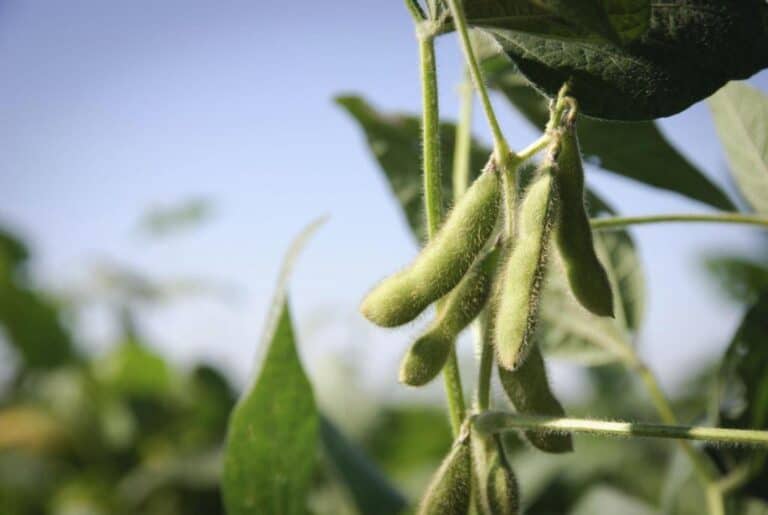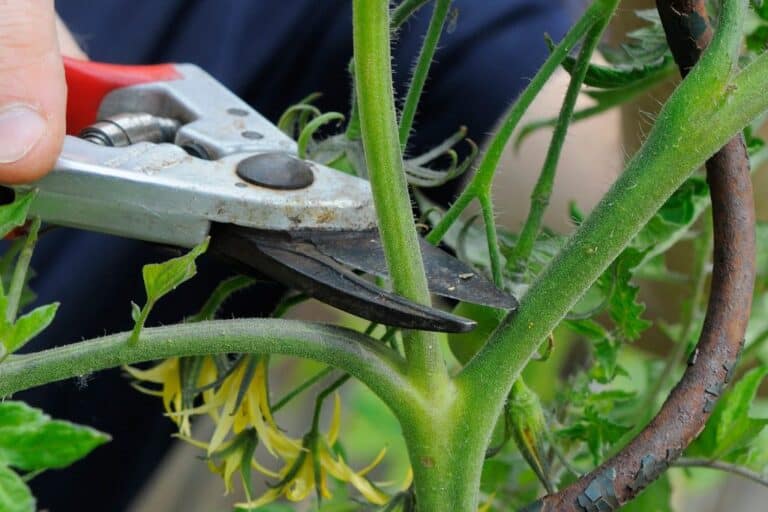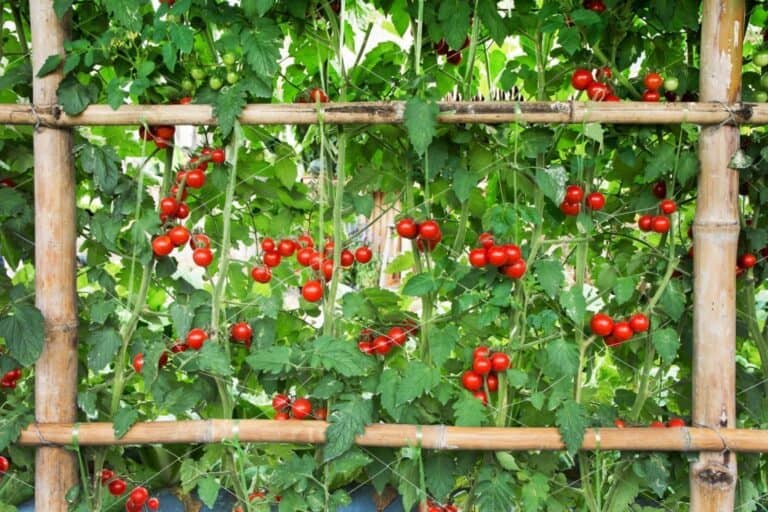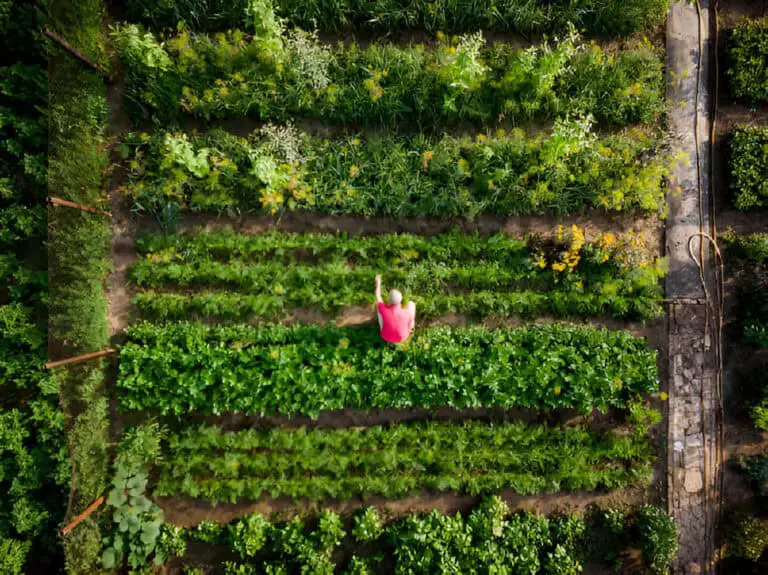Black Scallop Ajuga (Ajuga Reptans): Plant Care and Growing Guide

Black Scallop Ajuga (Ajuga reptans) is a fast-spreading ground cover with rich purple-black foliage and striking blue flower spikes. Learn how to grow, prune, and care for this shade-loving perennial to enhance your garden’s texture and color.
The Black Scallop Ajuga, also called Ajuga Reptans ‘Black Scallop’ Plant Patent #15,815, is popular among gardening fans worldwide. It’s also known as Bugle ‘Black Scallop’, Carpet Bugle ‘Black Scallop’, Ajuga ‘Black Scallop’, Bugleweed ‘Black Scallop,’ and Carpetweed ‘Black Scallop’.
This perennial is famous for its rapid growth and low maintenance. Its burgundy leaves will brighten your house or garden. But only if you learn how to take proper care of it for it to thrive.
Fortunately, this is exactly what we’ll cover in this Black Scallop Ajuga Care Guide. So let’s dive in.
In order to take proper care of your Black Scallop Ajuga you’ll need to keep in mind the following guidelines:
- Water: The Black Scallop Ajuga grows best with regular watering to keep the soil moist during the dry season. Reduce watering once the plant is established.
- Light: Keep your Ajuga Reptans ‘Black Scallop’ Plant Patent #15,815 in an environment where it can receive partial to full sun on a daily basis.
- Soil: Make sure to keep the Black Scallop Ajuga in soil with moist but well-draining properties, so ideally, one that is made of clay, loam, chalk, and sand.
And that’s practically it! If you keep these three factors in check, your Black Scallop Ajuga will likely have all it needs for it to survive and even thrive.
Scientific/Botanical Aspects

The Black Scallop Ajuga is part of the Lamiaceae family. It belongs to the genus Ajuga and the species Reptans. Its full scientific name is Ajuga Reptans ‘Black Scallop’ Plant Patent #15,815 (a-JU-gah REP-tanz).
As with other Ajugas, the Black Scallop Ajuga is a herbaceous plant, which means it will die back to the ground every year.
Growing Region
The Black Scallop Ajuga is a plant native to northern Africa, Europe, and southwestern Asia.
You might be wondering why your Black Scallop Ajuga’s native region is important. If you know where your plant came from, you’ll understand its preferred conditions. This helps you recreate those conditions at home.
The Ajuga Reptans ‘Black Scallop’ Plant Patent #15,815 thrives in heat zones 1–9. Its hardiness ranges from zones 3a to 10b. The ideal climate spans from zones 1 to A3.
Growth and Size
Growth
In terms of size and growth, the Black Scallop Ajuga is a relatively fast grower, which makes things tricky for any plant enthusiast.
Size
But, how big does the Black Scallop Ajuga actually get? What should you expect in terms of size? Let’s dive right in…
The Ajuga Reptans ‘Black Scallop’ Plant Patent #15,815 can grow up to 3″ – 6″ (7cm – 15cm) in 3″ – 6″ (7cm – 15cm) and 1′ – 3′ (30cm – 90cm) in 1′ – 3′ (30cm – 90cm).
The Black Scallop Ajuga is a medium-sized perennial. Keep this in mind when choosing its spot in your home.
Expect it to grow in a lovely, compact, and spreading shape. Keep this in mind for your garden landscape plans.
This is why experts recommend keeping an area of approximately 36″ (90cm) free so the Black Scallop Ajuga can spread to its best extent.
Water
In terms of watering, the Black Scallop Ajuga is a fairly complicated plant to take care of.
This is mostly because it has a not so straightforward watering schedule and somewhat regular watering needs.
Most experts agree that the Ajuga Reptans ‘Black Scallop’ Plant Patent #15,815 thrives with regular watering. This helps keep the soil moist, especially in the dry season. Reduce watering once the plant is established.
Which is why it is considered a plant with relatively average needs in terms of water.
Watering
Keep your Black Scallop Ajuga in moist, well-draining soil. This helps your plant grow and thrive.
Choose soil with good drainage and some moisture. This helps maintain the right moisture levels.
If you want a simple way to water your Black Scallop Ajuga, try the well-known ‘finger’ test. To perform this test, you just need to put your finger in your plant’s soil and determine if it’s moist or not. If it is, then don’t water; if it isn’t, then please do. In any case, this test will allow you to know if your Black Scallop Ajuga needs or does not need water, every time.
Soil Mix
The Black Scallop Ajuga likes soil that drains well but needs to stay slightly moist. To achieve this, mix clay, loam, chalk, and sand.
Most experts agree that Black Scallop Ajuga needs soil with clay, loam, and sand. This mix provides the right conditions for growth.
In addition to this, expert gardeners recommend having preferably alkaline, acid or neutral soil.
Light and Exposure
In terms of light & exposure, the Black Scallop Ajuga requires partial to full sun in order for it to thrive under the right conditions.
Most experts agree that this perennial will do well as long as you keep it in partial sun to shade, and it will be able to grow properly.
We recommend placing your Ajuga Reptans ‘Black Scallop’ Plant Patent #15,815 in the right shade. Here are the options:
- Full or deep shade: no direct sunlight or up to 2 hours daily.
- Little to partial shade: 2-6 hours of direct sunlight each day.
- Dappled or moderate shade: under other plants’ canopies.
- Full and direct sun: more than 6 hours of direct sunlight daily.
Season
Being a herbaceous plant, the Black Scallop Ajuga will die back to the ground every year.
But, you can expect it to have its ‘prime-time’ during the spring (late), and during the summer (early).
Flowers
Your Black Scallop Ajuga will bloom in spring and summer. Look for flowers from April to June in spring, and from July to September in summer.
This perennial is famous for its cutting flowers and its showy blooms. Plant enthusiasts really love it.
The Black Scallop Ajuga blooms with stunning violet-blue, purple, or lavender flowers. You can also spot some blue and white ones this time of year.
Foliage
The leaves from the Black Scallop Ajuga have a beautiful burgundy color during most of the year.
They have a simple setup. Their leaves are arranged in a rosulate and opposite-whorled pattern.
You can expect the leaves from your Ajuga Reptans ‘Black Scallop’ Plant Patent #15,815 to be around (3-6 inches) in size.
Attracts, Tolerance, and Resistance
The Black Scallop Ajuga attracts hummingbirds and butterflies. Keep this in mind when choosing your plant. You may find one or both in your garden.
It also tolerates animals like rabbits and deer. So, don’t worry if they visit. Your Ajuga Reptans ‘Black Scallop’ Plant Patent #15,815 will be just fine.
Garden
Now, let’s talk garden and how your Black Scallop Ajuga will look best in it.
Most owners of Ajuga Reptans ‘Black Scallop’ Plant Patent #15,815 believe this perennial fits well in cottage, contemporary, and rustic gardens.
Other owners consider that they complement well most gardens of informal and cottage, and prairie and meadow styles.
The Black Scallop Ajuga thrives in various spots in your garden. You can plant it in beds, borders, patios, and containers. It also works well on banks and slopes. Use it as ground cover or under roses and shrubs. Some people even use it for landscaping, erosion control, mass planting, edging, and firescaping. It’s perfect for cutting gardens and woodland gardens too.
Propagation Techniques
Propagating Black Scallop Ajuga is a simple and rewarding way to expand your ground cover. The plant spreads by stolons, which are above-ground runners. So, dividing the plant is the best way to propagate it. You can also root small offshoots from healthy clusters.
Best Propagation Methods:
- Division: Gently dig up the plant and separate rooted sections.
- Runner Transplants: Clip and plant rooted runners nearby.
- Container Propagation: Place divisions in pots to get them established before transplanting outdoors.
Ideal Times for Propagation:
| Season | Benefit |
| Spring | Strong root growth, mild weather |
| Early Fall | Cooler temps reduce shock |
For best results, plant divisions in well-drained soil and water regularly until established. Keep the soil moist but not soggy. Adding mulch helps retain moisture and suppress weeds. With a little care, new Ajuga patches will take off quickly and thrive.
Companion Plants
Black Scallop Ajuga’s do well with some other plants beside it. One good companion plant is the Heuchera, which will pair up nicely with your leafy friend.
Others consider that a nice Athyrium will work well too, so choose whichever you find works best for you!
Design Ideas for Incorporating Black Scallop Ajuga
Black Scallop Ajuga is a striking ground cover that brings deep, glossy purple foliage to your landscape. It fits well in many garden styles. From cottage gardens to modern designs, its bold color and texture shine. Whether you’re filling in shady spots or softening hard edges, this low-growing plant adds instant appeal.
Design Uses:
- Ground Cover: Ideal under shrubs or trees where grass struggles.
- Pathway Accent: Line walkways or stepping stones with Ajuga for a lush look.
- Container Spiller: Use it in pots where it can cascade over the edges.
Companion Plants Table
| Plant Name | Complements Ajuga With… |
| Hosta | Broad, contrasting leaves |
| Ferns | Soft texture and height |
| Heuchera (Coral Bells) | Colorful foliage blend |
Mixing Ajuga with other shade-loving plants creates layers of color and texture that transform ordinary beds into vibrant, living tapestries.
Conclusion
So that’s it! These are the main plant care requirements that you need to keep in mind in order to have a healthy Black Scallop Ajuga in your garden or home.






